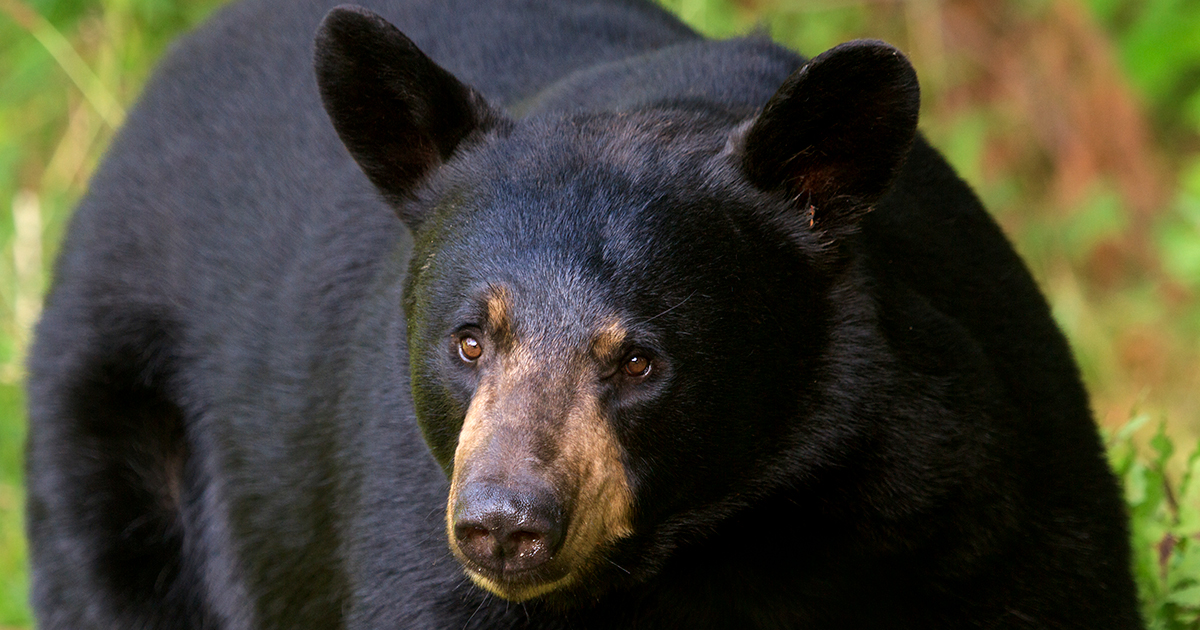
The Ontario government is accepting input from residents and concerned parties regarding a proposed change to setbacks for bait piles used to lure bears for the purpose of hunting.
Hunting black bears is legal as is placing bait piles, so long as they meet certain restrictions. Currently, according to the Environmental Registry of Ontario (ERO) those restrictions require that bait may not be placed within:
- 500 metres of a dwelling, unless written permission is obtained from the owner of the dwelling
- 500 metres of a public building (includes any building open to the public or to which the public may be admitted, including both commercial and non-commercial establishments)
- 200 metres of a right of way for public vehicular traffic
- 200 metres of a recreational trail established and maintained by an organization for the general public and that is reasonably sign posted and marked as at trail
The recommendation is to reduce the setback of 200 metres from right of way for traffic (roadways) and from established or maintained recreational trails to only 30 metres. That’s a change of 218 yards to 32 yards – less than half the length of a football field.
The Fur-Bearers believes this is irresponsible and puts the ease of hunters and guide outfitters ahead of public safety and the ecological integrity of Ontario’s natural places. Such a change would put people and wildlife at risk of conflict and other incidents. We are asking all supporters – particularly those who are residents of Ontario – to submit a comment to the ERO (click here to load the online submission form or email wildlifepolicy@ontario.ca) stating your opposition. Please also copy your Ontario MPP (locate them here) and the Minister of Natural Resources and Forestry. While we recognize that this is an emotional topic for many, we ask that you stick to facts. Make sure you indicate this is in regard to ERO 019-0022. Here are a few points we recommend using, as well as a sample of the letter we are submitting:
- There are significantly more recreationalists such as bird watchers, hikers, dog walkers, photographers, geocachers, and families than hunters or outfitters in the province, many of whom are unfamiliar with hunting and firearm safety protocols who may be put at risk as a result of this move.
- Moving bait piles closer to publicly accessible roadways or trails increases the probability of negative encounters between wildlife (of all species who are potentially attracted to the bait piles) and non-hunters or outfitters.
- Moving bait piles closer to roadways increases the probability of vehicular collisions with large animals (there are tens of thousands of such incidents, including those causing serious harm to the wildlife, the driver and passengers, vehicles; additionally, this can influence insurance rates and road maintained costs). (Source: http://www.tc.gc.ca/eng/motorvehiclesafety/tp-tp14798-1289.htm)
- As more recreationalists who are not hunters use wild spaces, regulations should be put in place to protect them – not increase the possibility or probability that they will be harmed by hunting and hunting-related activities such as baiting.
Our Submission
Dear Minister Yakabuski and Ministry of Natural Resources and Forestry staff,
The Fur-Bearers – a national wildlife not-for-profit with staff, volunteers, and supporters residing in Ontario – actively opposes ERO 019-0022 to reduce minimum distance requirement for placement of bait from rights of way and trails for black bear hunting.
This proposal will result in a greater risk to human-bear conflict – the very thing the government first said the spring bear hunt was required to reduce. Intentionally bringing bears closer to the public, most of whom are not hunters or trained in firearm and hunting safety, as well as other wildlife who will frequent bait piles is reckless and irresponsible.
This would also increase the probability of vehicle-wildlife traffic collisions, which costs taxpayers and drivers through increased insurance rates, property damage, loss of work or life, and road maintenance and prevention materials. Thousands of Ontario drivers are already negatively impacted by wildlife-vehicle collisions – and that’s without intentionally bringing animals closer to the road.
Any support for this regulation is support for increasing negative encounters between people and wildlife and puts human and non-human life at risk – hunters and non-hunters alike. We ask that you reject this proposal with prejudice.
We will provide updates on this as they are available. Commenting is only open until June 17, 2019, so get your submission in today!
pleaseclick hereand help us save lives today.

